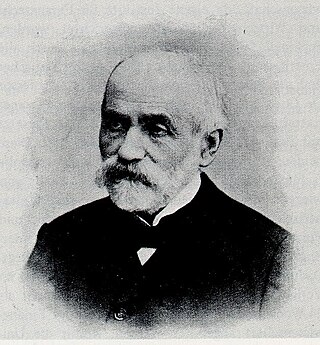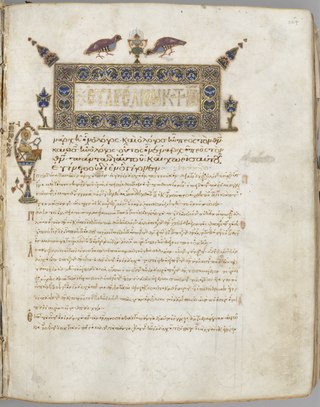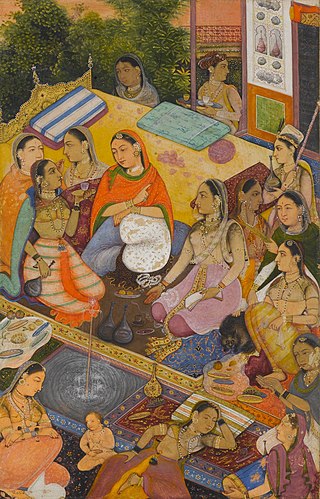
Ethnocentrism in social science and anthropology—as well as in colloquial English discourse—means to apply one's own culture or ethnicity as a frame of reference to judge other cultures, practices, behaviors, beliefs, and people, instead of using the standards of the particular culture involved. Since this judgment is often negative, some people also use the term to refer to the belief that one's culture is superior to, or more correct or normal than, all others—especially regarding the distinctions that define each ethnicity's cultural identity, such as language, behavior, customs, and religion. In common usage, it can also simply mean any culturally biased judgment. For example, ethnocentrism can be seen in the common portrayals of the Global South and the Global North.

The history of religion refers to the written record of human religious feelings, thoughts, and ideas. This period of religious history begins with the invention of writing about 5,200 years ago. The prehistory of religion involves the study of religious beliefs that existed prior to the advent of written records. One can also study comparative religious chronology through a timeline of religion. Writing played a major role in standardizing religious texts regardless of time or location, and making easier the memorization of prayers and divine rules.
In historiography, periodization is the process or study of categorizing the past into discrete, quantified, and named blocks of time for the purpose of study or analysis. This is usually done in order to understand current and historical processes, and the causality that might have linked those events.

The Renaissance is a period in history and a cultural movement marking the transition from the Middle Ages to modernity, covering the 15th and 16th centuries and characterized by an effort to revive and surpass the ideas and achievements of classical antiquity; it was associated with great social change in most fields and disciplines, including art, architecture, politics, literature, exploration and science. It began in the Republic of Florence, then spread to the rest of Italy and later throughout Europe. The term rinascita ("rebirth") first appeared in Lives of the Artists by Giorgio Vasari, while the corresponding French word renaissance was adopted into English as the term for this period during the 1830s.
World history or global history as a field of historical study examines history from a global perspective. It emerged centuries ago; leading practitioners have included Voltaire (1694–1778), Hegel (1770–1831), Karl Marx (1818–1883), Oswald Spengler (1880–1936), and Arnold J. Toynbee (1889–1975). The field became much more active in the late 20th century.

An illuminated manuscript is a formally prepared document where the text is decorated with flourishes such as borders and miniature illustrations. Often used in the Roman Catholic Church for prayers and liturgical books such as psalters and courtly literature, the practice continued into secular texts from the 13th century onward and typically include proclamations, enrolled bills, laws, charters, inventories, and deeds.

A miniature is a small illustration used to decorate an ancient or medieval illuminated manuscript; the simple illustrations of the early codices having been miniated or delineated with that pigment. The generally small scale of such medieval pictures has led to etymological confusion with minuteness and to its application to small paintings, especially portrait miniatures, which did however grow from the same tradition and at least initially used similar techniques.

The Institute of the Italian Encyclopedia Treccani, also known as the Treccani Institute, is a cultural institution of national interest, active in the publishing field, founded by Giovanni Treccani in 1925.
The following outline is provided as an overview of and topical guide to history:
Advanced Placement (AP) European History, is a course and examination offered by the College Board through the Advanced Placement Program. This course is for high school students who are interested in a first year university level course in European history. The course surveys European history from between 1300-1450 CE to the present, focusing on religious, social, economic, and political themes.
The following outline is provided as an overview of and topical guide to the Middle Ages:

History is the systematic study and documentation of the human past.

Jordanian art has a very ancient history. Some of the earliest figurines, found at Aïn Ghazal, near Amman, have been dated to the Neolithic period. A distinct Jordanian aesthetic in art and architecture emerged as part of a broader Islamic art tradition which flourished from the 7th-century. Traditional art and craft is vested in material culture including mosaics, ceramics, weaving, silver work, music, glass-blowing and calligraphy. The rise of colonialism in North Africa and the Middle East, led to a dilution of traditional aesthetics. In the early 20th-century, following the creation of the independent nation of Jordan, a contemporary Jordanian art movement emerged and began to search for a distinctly Jordanian art aesthetic that combined both tradition and contemporary art forms.
Helen Gardner (1878–1946) was an American art historian and educator. Her Art Through the Ages remains a standard text for American art history classes.

Roland "Ron" Edwin Larson is a professor of mathematics at Penn State Erie, The Behrend College, Pennsylvania. He is best known for being the author of a series of widely used mathematics textbooks ranging from middle school through the second year of college.

Women's history is the study of the role that women have played in history and the methods required to do so. It includes the study of the history of the growth of woman's rights throughout recorded history, personal achievements over a period of time, the examination of individual and groups of women of historical significance, and the effect that historical events have had on women. Inherent in the study of women's history is the belief that more traditional recordings of history have minimized or ignored the contributions of women to different fields and the effect that historical events had on women as a whole; in this respect, women's history is often a form of historical revisionism, seeking to challenge or expand the traditional historical consensus.

In art, a reception piece is a work submitted by an artist to an academy for approval as part of the requirements for admission to membership.

Merry E. Wiesner-Hanks is an American historian and Distinguished Professor Emerita at the University of Wisconsin–Milwaukee's Department of History. She describes herself as wearing "... two hats, one as a historian of early modern Europe and the other as a world/global historian, with a primary focus on women, gender, and sexuality within these".

Dictionary of Women Artists is a two-volume dictionary of 600 women artists born before 1945, going back to the Middle Ages. It was edited by Delia Gaze with 23 advisors and over 100 contributors. Gaze is a writer for the Oxford DNB and wrote several biographies that were released in the 2004 edition of the ODNB.

The Oxford Illustrated History of Medieval Europe is a history of medieval Europe, first published by Oxford University Press in 1988 under the editorship of George Holmes. It is divided into six chapters by different authors, covering the period 400 to 1500 AD, each of which has either a northern or southern Europe focus. Reviewers welcomed the editor's decision to have only six tightly-focused chapters rather than the many divisions of other works, and felt that the structure of the book worked well, sufficient in itself as a history of the European medieval period and giving the reader enough background to explore the subject in more depth in other works. Despite the non-traditional structure, however, the book was criticised as perhaps too conservative in its perspective and neglecting a number of areas of growing importance in historical enquiry such as the role of women.













